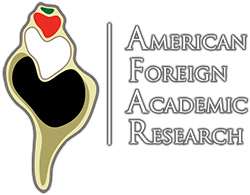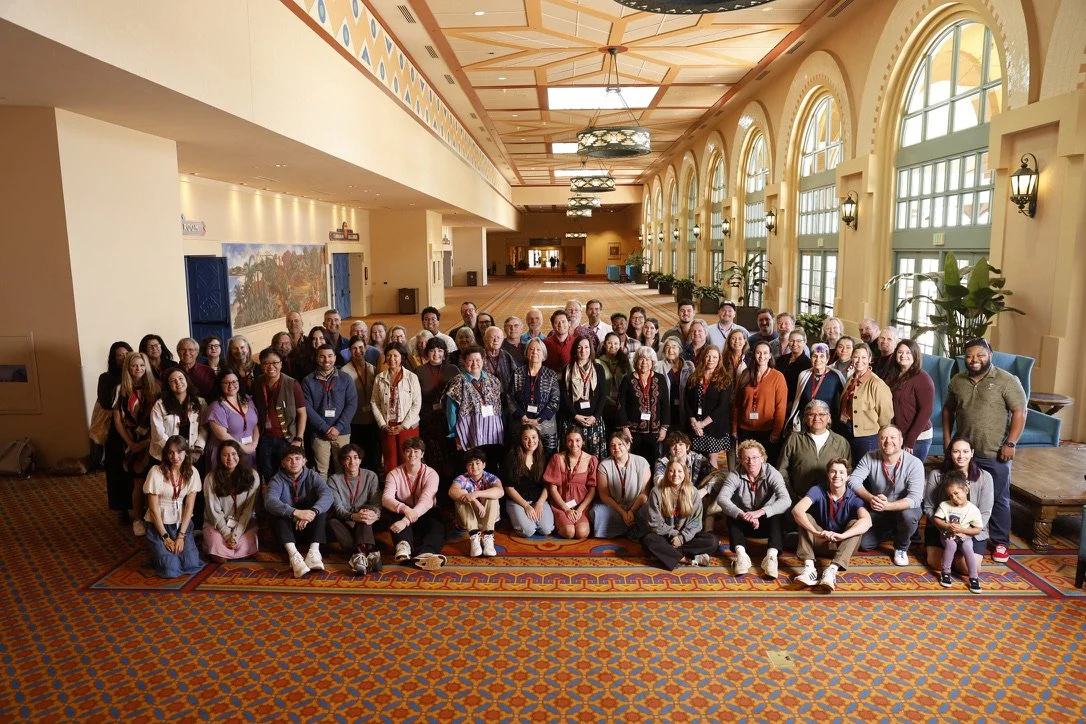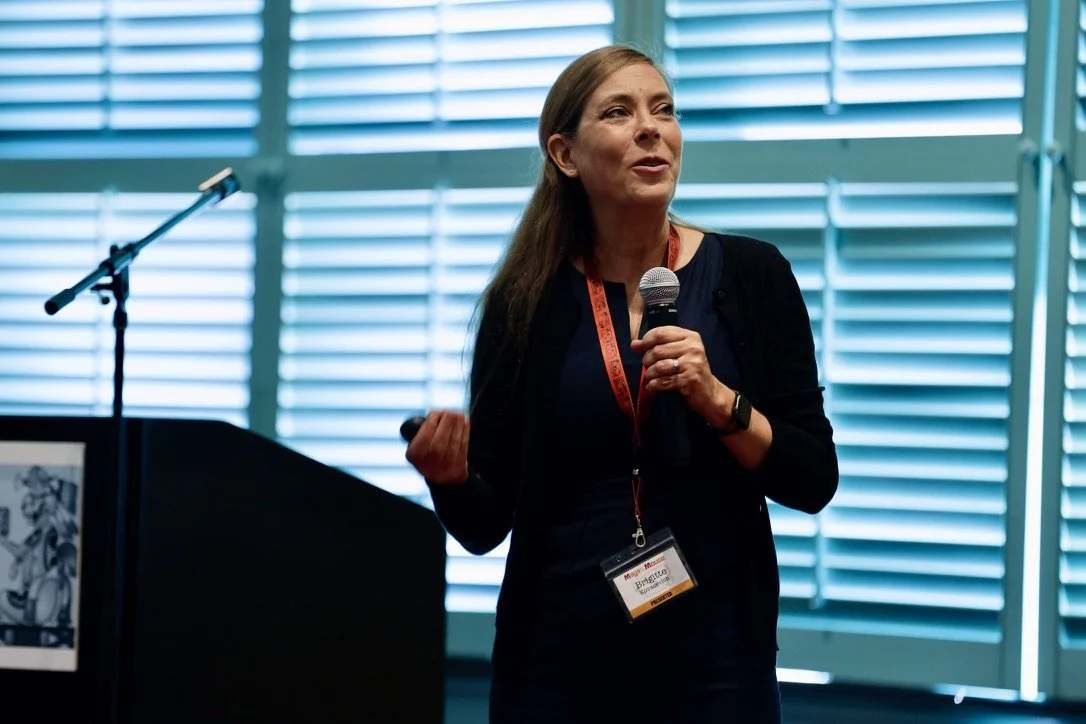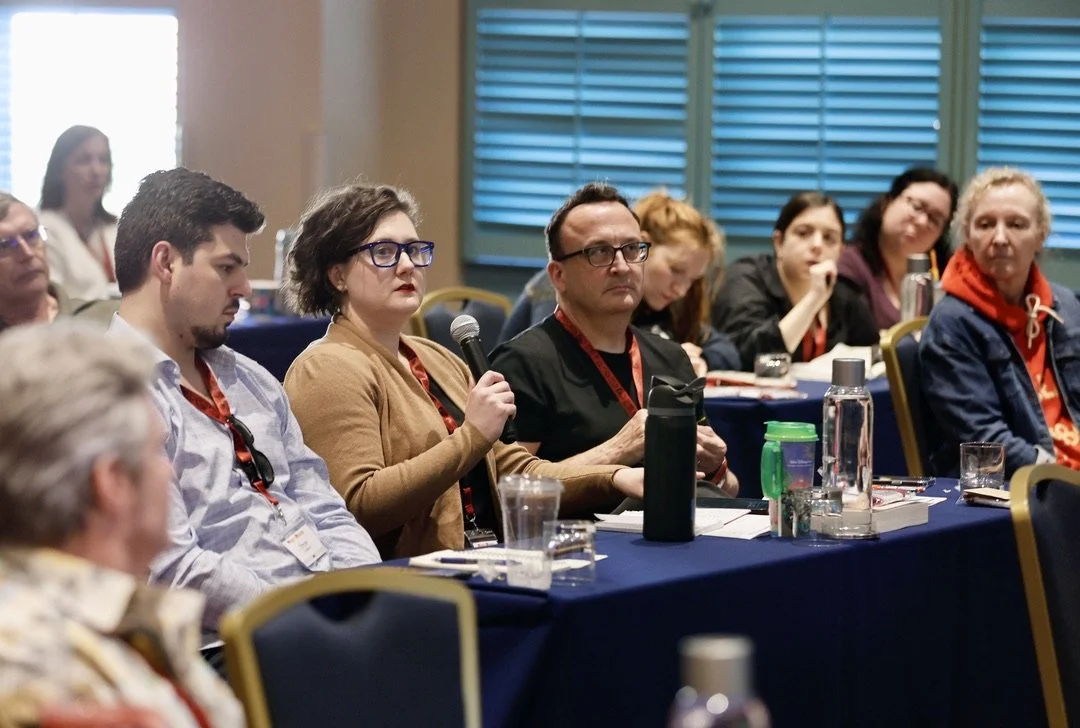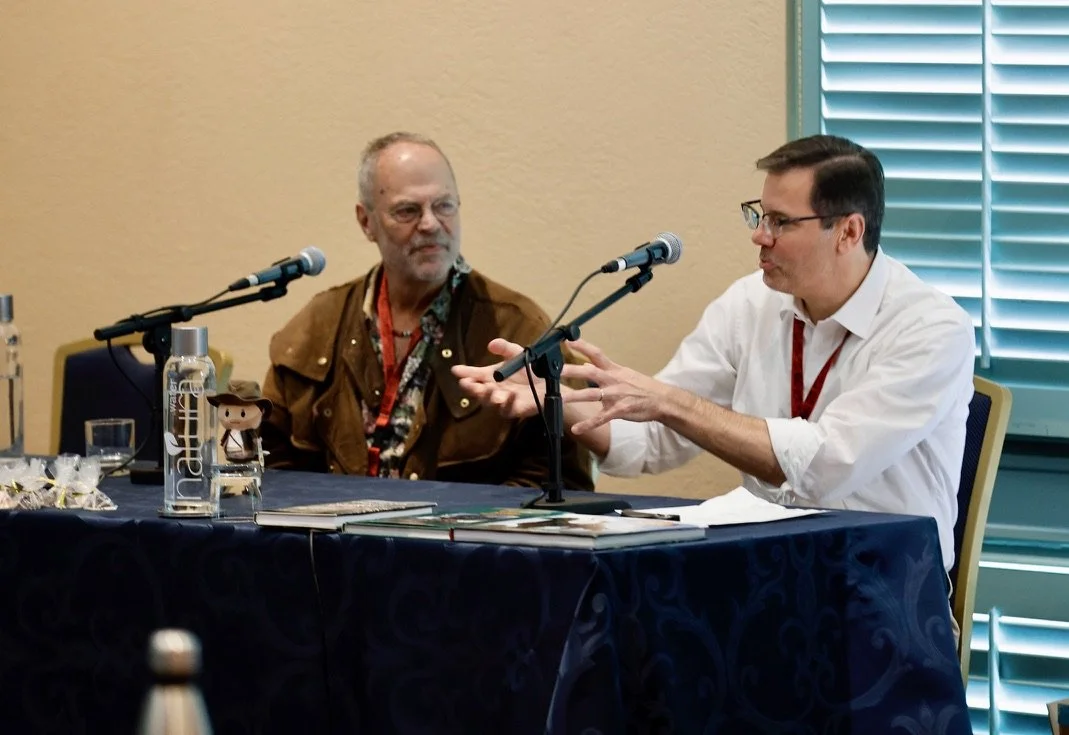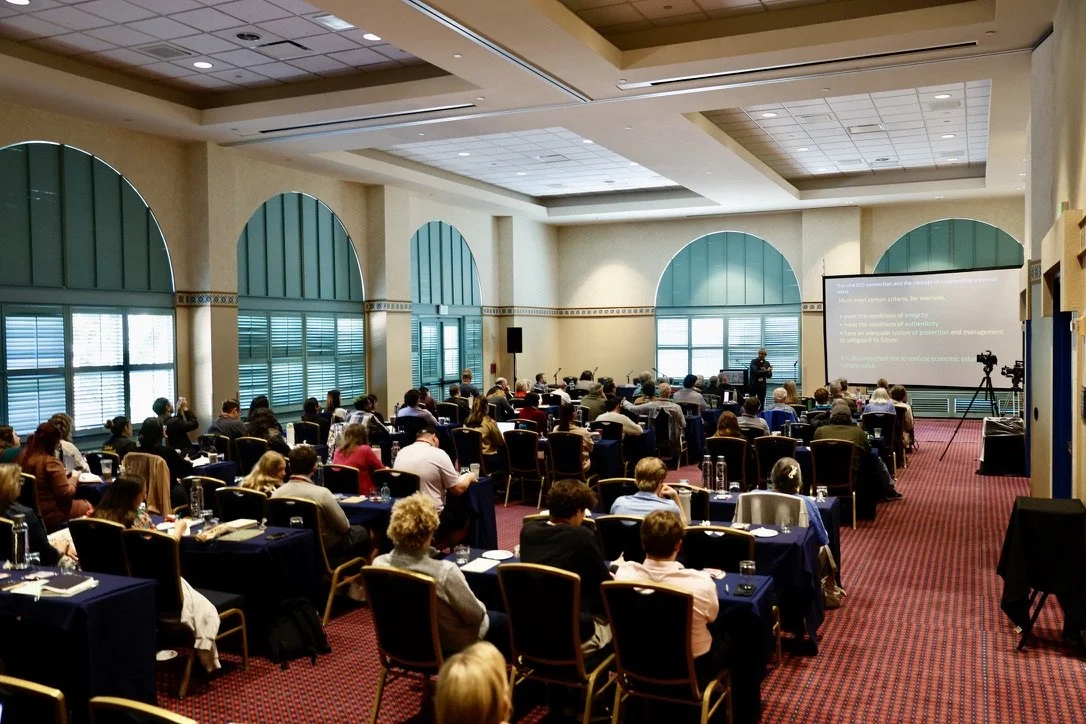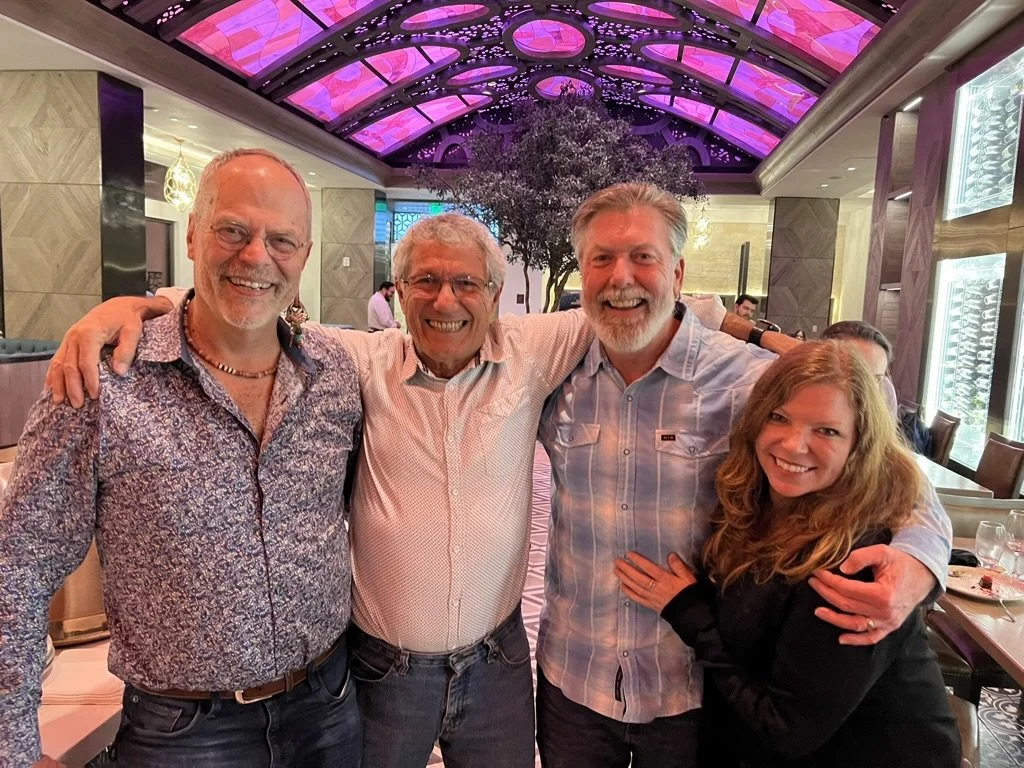Download Full Itinerary & Schedule
Maya at the Mouse Meetings Program
The first meeting provided participants a great overview of the ancient Maya but didn't focus on any specific themes. Although we avoid firm bumpers for conference content, the theme for this meeting will be Flora and Fauna of the Ancient Maya World. Within this very broad topic, we will discuss the plants and animals (natural and supernatural) important to the ancient Maya. Among other things, we hope to present the iconographic representation of plants and animals, the utilization of these resources in the form of diet and material culture, and the supernatural relationships and personifications associated with animals.
We are excited to share a general program schedule for prospective attendees but the detailed daily programming schedules will not be finalized for a few weeks.
The schedule is in Eastern Daylight Time, or (GMT -4).
Thursday, February 19
The conference will officially kick off with a special welcome and evening keynote talk , followed by an evening social event.
Disney Animals in the Maya World
Harri Kettunen - University of Helsinki
The opening talk of this year’s Maya at the Mouse conference explores representations of animated animal characters in Disney productions in comparison with those found in ancient Maya art. Although relatively very few Disney animal species appear in the Maya area, there are some that have their counterparts in the Disney productions. In ancient Maya art, some animal species are rendered with remarkable naturalism and anatomical detail, while others appear in more generalized forms that lack clear species-level identifiers. A similar pattern is evident in Disney productions, where certain characters are portrayed with highly specific biological traits, contrasted with others that are more broadly or generically conceived.
The breadth of animal species within Maya iconography reflects the natural environment familiar to the ancient Maya, whereas Disney’s bestiary draws from a global fauna and, notably, pays comparatively less attention to New World species despite its origins as an American institution. Both traditions, however, move beyond the natural world, incorporating mythological elements and fantastical creatures. These shared forays into the imaginary demonstrate how artists across cultures and eras deploy animal figures to mediate between reality and fantasy.
Friday, February 20
Friday will be filled with lectures and forums, running roughly between 9:00am to 4:00pm. A 1.5 hour catered lunch will be served a few steps from our conference room and a coordinated evening meetup will be scheduled for those interested.
Creatures of the Night: Bats in Classic Maya Art & Writing
Marc Zender - Tulane University
For the Classic Maya, night was an alien landscape, antithetical and inimical to humans, the domain of predatory, rapacious animals such as jaguars, bats, and mosquitos. As I’ve shown previously (Zender 2010, 2012), such creatures are classified in Maya writing and art as “nocturnal” through the visual infixation of an element reading AHK’AB ‘darkness’. Some of these beings are actually nightmarish, such as the shrieking bats often shown holding plates of dismembered human body parts, their wings marked with disembodied eyes, crossed bones, and mandibles. Undoubtedly this reflects the association of these creatures with disease, ill omen, and death. Yet there seems to be more to the story, for bats (Chiroptera) are well-represented in this part of the world, with seven distinct families and 86 species in Guatemala alone. These vary from the diminutive, frugivorous, and leaf-nosed Honduran white bat (Ectophylla alba) to the large, insectivorous, snub-nosed big brown bat (Eptesicus fuscua) to the medium-sized leaf-nosed vampire bat (Desmodus rotundus). Such striking biodiversity would seem to belie the utility of the singular Mayan term suutz’ “bat”, although closer examination reveals that the Maya modified this core term with various additional adjectives—e.g., chak suutz’ “red/brown bat” or, perhaps, “great bat”, k’an suutz’ ‘yellow bat’, and sak suutz’ “white bat”—thereby capturing at least some of their variations. Similarly, while Thompson recognized only one glyph for “bat” (T756) in his Catalog of Maya Hieroglyphs (1962), we now know of at least eight distinct “bat” signs in Maya writing, including the logograms SUUTZ’ “bat (generic)” and TZUTZ “furry” (typically used in rebus for the verb tzutz ‘complete’), the syllabograms xu (derived from xux- ‘whistle’) and tz’i (derived from tz’i- ‘shriek’), as well as at least four others of unknown value and motivation. Close study of these hieroglyphs and their variations, coupled with the numerous contexts of chiropterans in art, reveals much of interest with respect to surprisingly nuanced Maya views about bats and the development of those views over several hundred years of Maya writing and art.
BEYOND WAX AND HONEY, THE GREAT ANCIENT MAYA POLLINATORS
De. Adolfo Iván Batún Alpuche - Universidad de Oriente
Archaeological settlement patterns studies conducted in the island of Cozumel, Quintana Roo, México, showed a complex system of stone walls demarcating cultivable plots of land arranged in a concentric pattern around identified prehispanic beekeeping structures. Likewise, historical accounts of first spaniards landing in the island of Cozumel during the sixteenth century mentioned the island as a great place for beekeeping and honey production, never seen in other Caribbean islands, therefore after the conquest of Yucatan, they made the Cozumel Maya people payed great amounts of honey and wax as tribute. Beyond the honey and wax maketable production that Spaniards were able t osee, they were blinded to understand the complex system of pollinators management implemented by the postclassic Cozumel Mayas developed to improve agrarian production and ecological equilibrium of the complex island agrarian production system.
Cave Dwelling Animals of the Underworld and their Incorporation in Ancient Maya Ideology
Jaime J. Awe, Jut Wynne, and Molly Lathrop
Ancient Maya cosmology, ideology, and mythology are rife with animal symbolism. Among the most iconic and revered animals are bats, jaguars, serpents, and crocodiles, all species with close associations to cave environments. The Camazotz, or killer bats, for example, played a significant role in the myth of the Hero Twins where they decapitate Hunahpu, son of the maize god. Bats were also harbingers of death and guardians of the underworld, while jaguars, serpents, and crocodiles featured, and continue to feature, prominently in Maya concepts of the universe. In this presentation, we provide results of recent archaeological and biological investigations which recorded evidence for the presence of all these animals in the caves of central Belize. We also examine cave art depicting these animals, and we suggest that it was likely the observation of these creatures in cave environments that led the Maya to incorporate them in their myths, world view, and religious ideology.
The Feast of Life: Maya Women and Food Diplomacy
Traci Ardren - University of Miami
The role of Maya women past and present as holders of culinary wisdom is well known. This presentation will review some of the specialized aspects of women’s role as food producers during the Classic period. We will explore plants and animals women grew in their household gardens, the roles women played in introducing new methods of food preparation throughout the Maya world, and how elite women used a well-planned feast to advance diplomatic goals. Maya women of all social stations were the caretakers of a deep cultural knowledge base centered in what was appropriate to serve and consume in every social context. We will explore what is known about women’s relationship with food in the Classic period and what we can learn about the past by understanding the culinary lives of Maya women today.
My Life as a Mayan Artist
Patricia Martin Morales -
For over thirty years I have dedicated myself to bringing the Mayan art of the past to life. I have dedicated myself to working with Mayan ceramics, especially polychrome ceramics. During all this time, together with my family, we have been perfecting our work. My goal has always been to achieve high quality in the pieces we make, to achieve a great similarity to the ancient pieces of the Mayan culture, something we have achieved and maintained in the reproduction works we manufacture in our workshop; all of this is based on the great works of art of the ancient Maya. Thanks to this, I have been recognized at the local, national, and even international levels.
In this presentation, I would like to talk about several aspects of my life as a Mayan artist that I consider important to understand my role and achievements in the world of Mayan art. I began working with Mayan ceramics alongside my brother, specializing in polychromy. For years, I practiced and perfected my work, and eventually, I was able to establish my own workshop with my husband (+), where we created high-quality works based entirely on Mayan art. Throughout my life as a Mayan artist, I have had the opportunity to work with important researchers of Mayan culture, such as George Bey, Nikolai Grube, David Stuart, and other prominent archaeologists. Thanks to the work and contributions of great researchers of the culture, I have been able to understand and interpret Mayan art in a more meaningful way. Thanks to the many important contributions of many researchers, we have been able to better understand the ancient Mayan pieces. In our workshop, countless pieces and reproductions of original pieces of Mayan art have been made. We have tirelessly dedicated ourselves to rediscovering ancient ceramic manufacturing techniques through experimentation and observation, ranging from the preparation of the raw material, which is clay, and the mineral pigments for polychromy to the firing techniques; many of these techniques hold secrets that only we as artists/craftsmen know and have managed to transmit. All this that has been learned has helped us to obtain a better quality in our work and greater perfection, so much so that it has been recognized at a high level in the Mayan artistic field.
I feel very proud because my work as a Mayan artist has now been recognized worldwide. Over the years, I have learned so much about Mayan culture that I wanted to share it with the world. My knowledge of Mayan polychromy is something that should be preserved so that new generations can learn how Mayan art and culture can continue to be preserved thanks to the work I have done throughout my life.
The Intrinsic Value of Nature in the World of the Ancient Maya
Brianna Pfost - Walt Disney Imagineering
Beautiful but dangerous, threatening yet mesmerizing, the flora and fauna of the natural world has and will always capture the imagination of humankind. This presentation will discuss the “why” rooting the choices to build an attraction featuring the Ancient Maya at Disney’s Animal Kingdom, and how a familiar yet reluctant hero can tie everything together. It will offer a glimpse into the Imagineering design process, anchored by theme and research, and discuss how Imagineers might weave the ethos of the ancient Maya worldview into a mythical, provocative, and thrilling attraction.
Saturday, February 21
Mirroring Friday, Saturday will be filled with lectures and forums, running roughly between 9:00am to 4:00pm. A 1.5 hour catered lunch will be served a few steps from our conference room and a coordinated evening meetup will be scheduled for those interested.
The Kaxil Kiuic Biocultural Reserve and Disney’s Animal Kingdom: Joe Rohde’s guiding principles in action in the jungles of Yucatan.
George J. Bey III (Millsaps College) and James Callaghan (Director, Kaxil Kiuic)
The Kaxil Kiuic Biocultural Reserve is a “real world” example of Joe Rohde’s guiding principles for Disney’s Animal Kingdom. The development of a biocultural reserve in the jungles of Yucatan evolved organically following unconsciously and consciously Rohde’s core principles. This presentation examines the ways these core principles have manifested themselves in the Kaxil Kiuic Biocultural Reserve, creating a unique research/learning program and landscape where Disney theme park philosophy has moved into a real world setting. The Kaxil Kiuic biocultural reserve is not a “Disneyfied” landscape but does present a unique biocultural setting that reflect Rohde’s core principles. Rohde’s basic principles, examined in this study of the Kaxil Kiuic Biocultural Reserve include: the intrinsic value of nature, transformation through adventure and a personal call to action. It is the overall integration of archaeology, biology/conservation and outreach that has made it possible to bring these principles into operation in a reserve without boundaries.
Fauna at the top of the food chain; flora at the edge of the road
Mary Miller - Getty Research Institute
How did the Maya represent the birds, mammals and reptiles that dominated their world, along with the most dangerous creatures of all, human beings? Powerful lords wore jaguars and ocelots, avian raptors, and snakes, all animals that can move from field and forest to treetop and beyond; at the same time that musicians and artists often don water lilies and imagery of the surface of the earth, as occasionally worn elite women as well.
The broken landscape at the edge of field and forest generated alternative and modest life ways. One of the most neglected of Maya plants is the sunflower, an important foodstuff, but small creatures lived in its shadows. This presentation will offer a fresh look at the plants and animals of the ancient Maya world.
The Role and Place of Animals in Ancient Maya Mythological Narratives
Christophe Helmke - University of Copenhagen
This paper examines the role and place of animals in ancient Maya mythological narratives through a thematic review of the principal motifs and narrative contexts in which they appear. To address the broader corpus of Maya iconography, the focus is placed on animals depicted in fully zoomorphic form, thereby excluding supernatural beings typically represented with human bodies and animal heads. Likewise, wahy creatures and deities exhibiting zoomorphic attributes are omitted in order to concentrate on mythological agents and the narratives in which they figure. This approach allows for the identification of natural and supernatural animals, in both passive roles (primarily serving to define the setting of a scene) and active roles as central agents within key mythological episodes. A selection of major themes is presented to illustrate these distinctions and to clarify the position of animals within ancient Maya mythology.
Harbingers of the Underworld: Owl Symbolism in Ancient Mesoamerica
Harri Kettunen - University of Helsinki
This talk explores the cultural significance of owls in Mesoamerica through zoological, mythological, iconographic, and epigraphic perspectives. Throughout the region, owls have commonly been associated with ill omens and death; yet their symbolism is more nuanced, and they are at times imbued with positive meanings, particularly in the context of hunting. Ancient conceptions of owls resonate in contemporary traditions, as demonstrated by linguistic evidence. Across Mesoamerica, depictions of owls in writing and visual art share distinctive features, most notably large, frontally rendered, staring eyes. This convention is also found in other ancient writing systems and artistic traditions, including Egyptian hieroglyphs and some of the earliest known owl images from the Upper Paleolithic, underscoring the broader cross-cultural salience of this motif.
The Amazing Wildlife of the Maya Jungle and the Ways It Protects Our Health
Carlos N. Ibarra-Cerdeña, PhD - Center for Research and Advanced Studies (Cinvestav), Mérida Unit, México
Deep within the tropical forests once inhabited by the ancient Maya, life continues to thrive in extraordinary and unexpected ways. From stealthy jaguars and agile spider monkeys to elusive rodents and curious coatis, this vibrant web of life not only sustains the forest — it quietly safeguards our own health.
In this presentation, I will share stories and images from an intensive wildlife monitoring project conducted in the Maya Jungle of southeastern Mexico, where we used camera traps, live captures, and ecological surveys to study the region’s remarkable biodiversity. Our cameras have captured striking scenes of endangered species such as jaguars, ocelots, and margays, as well as deer and other large mammals that play key roles in maintaining the ecological balance of the forest.
One of the most fascinating ways wildlife protects human health is through these very interactions. Large predators and herbivores — often jeopardized by habitat destruction and hunting — help control rodent populations, which are important reservoirs for many pathogens. When these species decline, rodents tend to multiply unchecked, and their ectoparasites such as ticks also increase, elevating the risk of disease transmission to people and domestic animals. Beyond the beauty of these encounters lies an essential message: well-conserved forests, especially those within natural protected areas, help regulate disease dynamics naturally. By maintaining ecological interactions and biodiversity, these landscapes provide invisible but vital benefits to human wellbeing.
Through field stories, vivid visuals, and lessons from the jungle, this talk celebrates the extraordinary wildlife of the Maya world — showing how protecting forests and their creatures is, ultimately, a way of protecting ourselves.
Sunday, February 22
Flora and Fauna in Maya Art and Writing
Harri Kettunen & Marc Zender
In this workshop, we explore the representations of the natural world in Maya iconography and the role of the natural environment in the Maya script. Participants will explore a variety of artistic traits and epigraphic attributes that originate in the natural environment, including flora, fauna, and geological features. Additionally, we will explore ancient Maya concepts and representations of mythological beasts and discuss their meaning within the Maya worldview.
